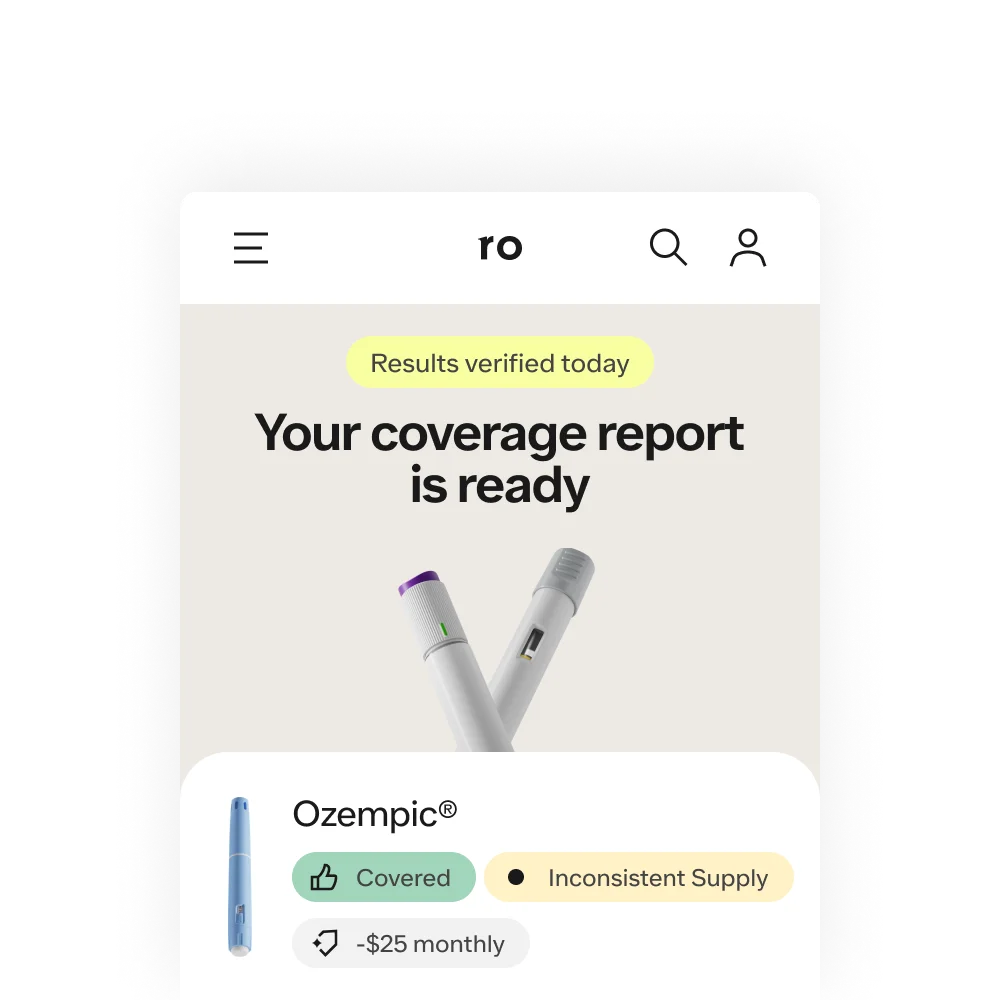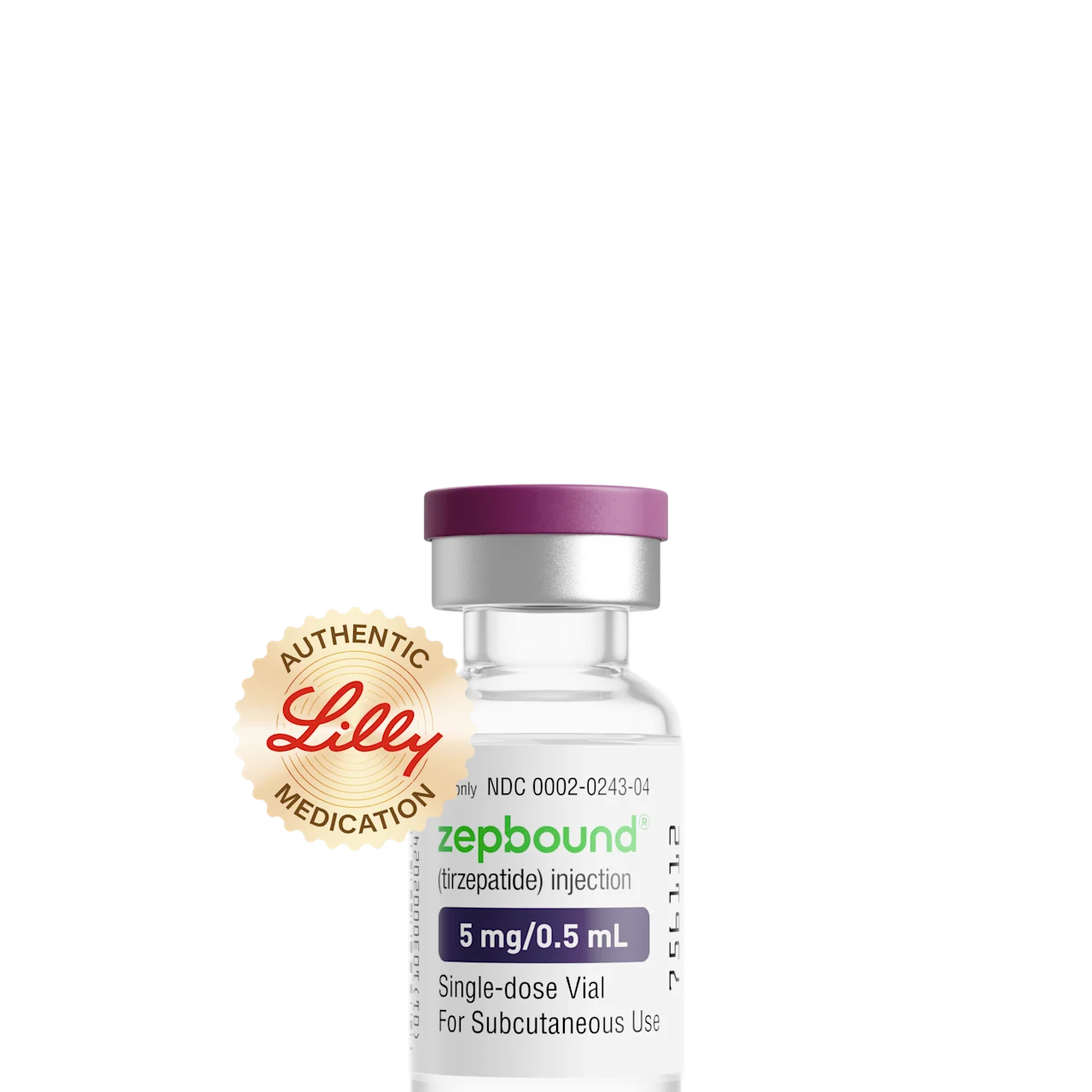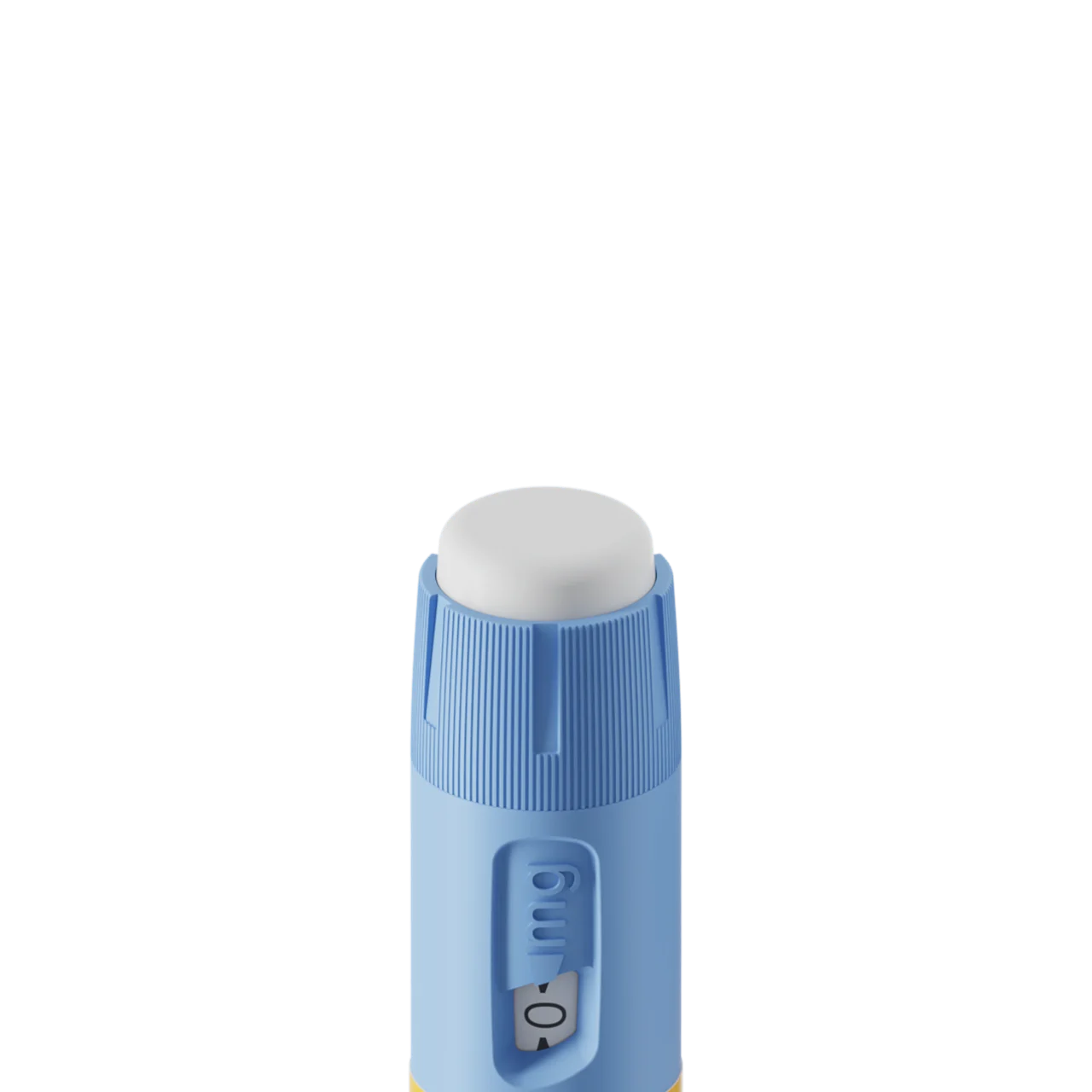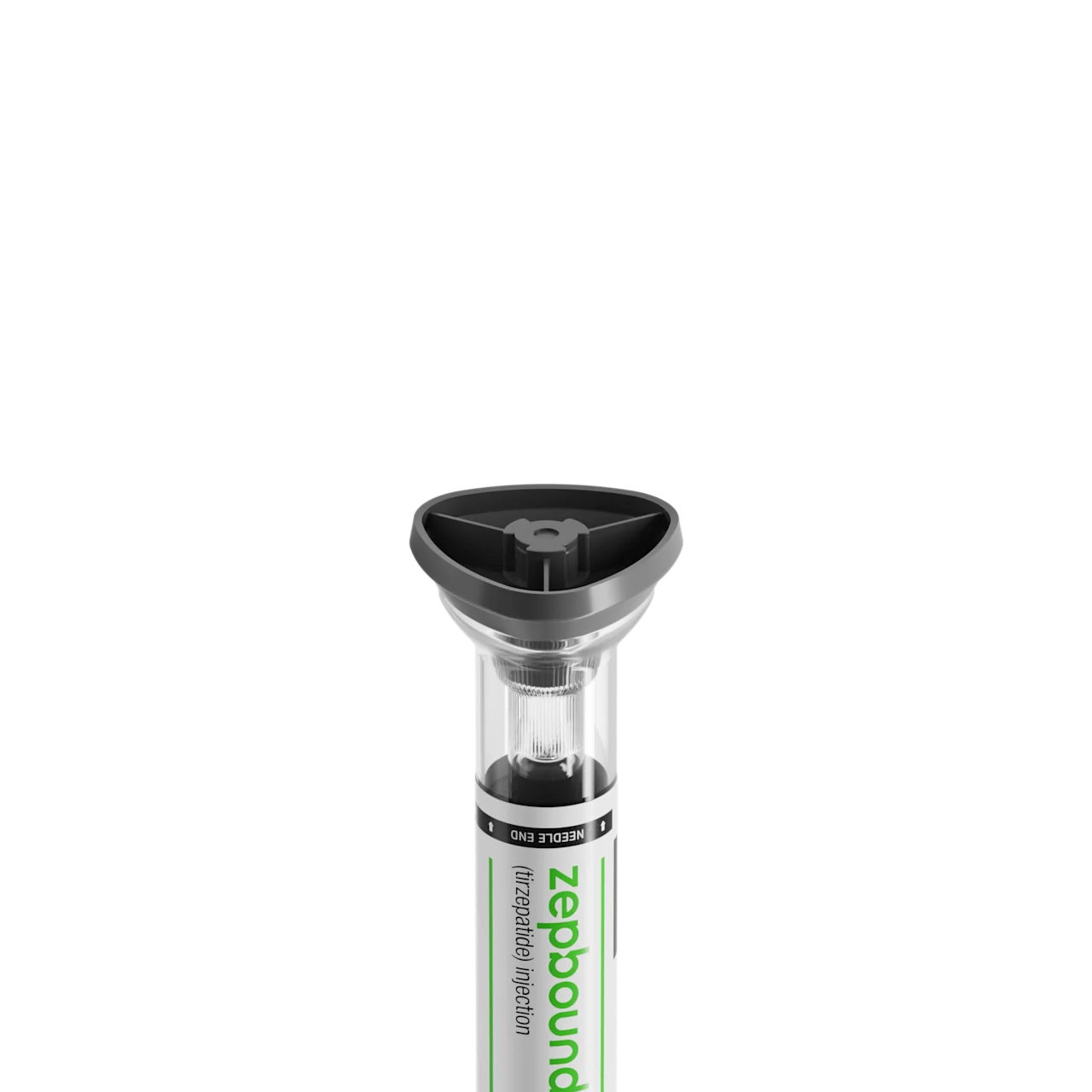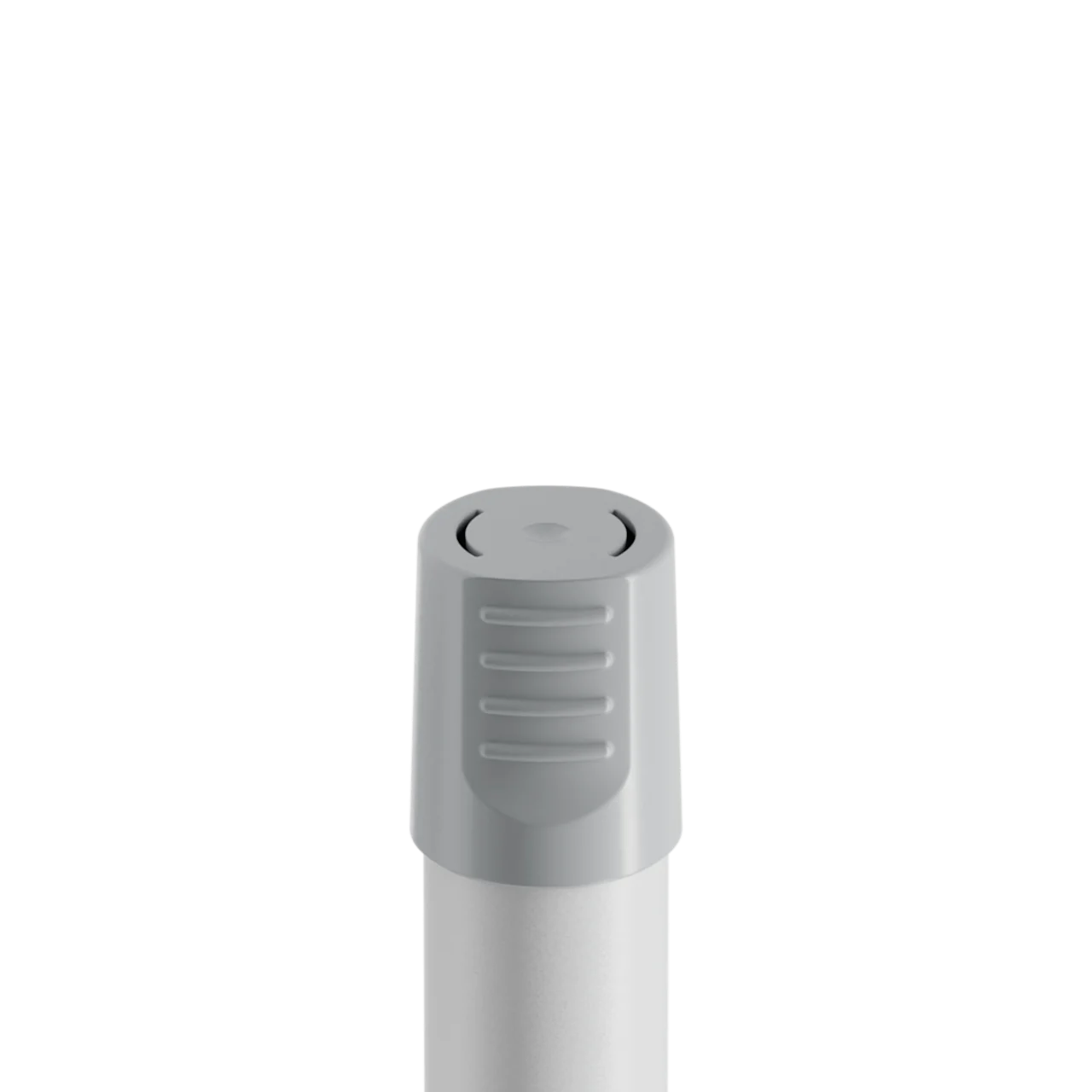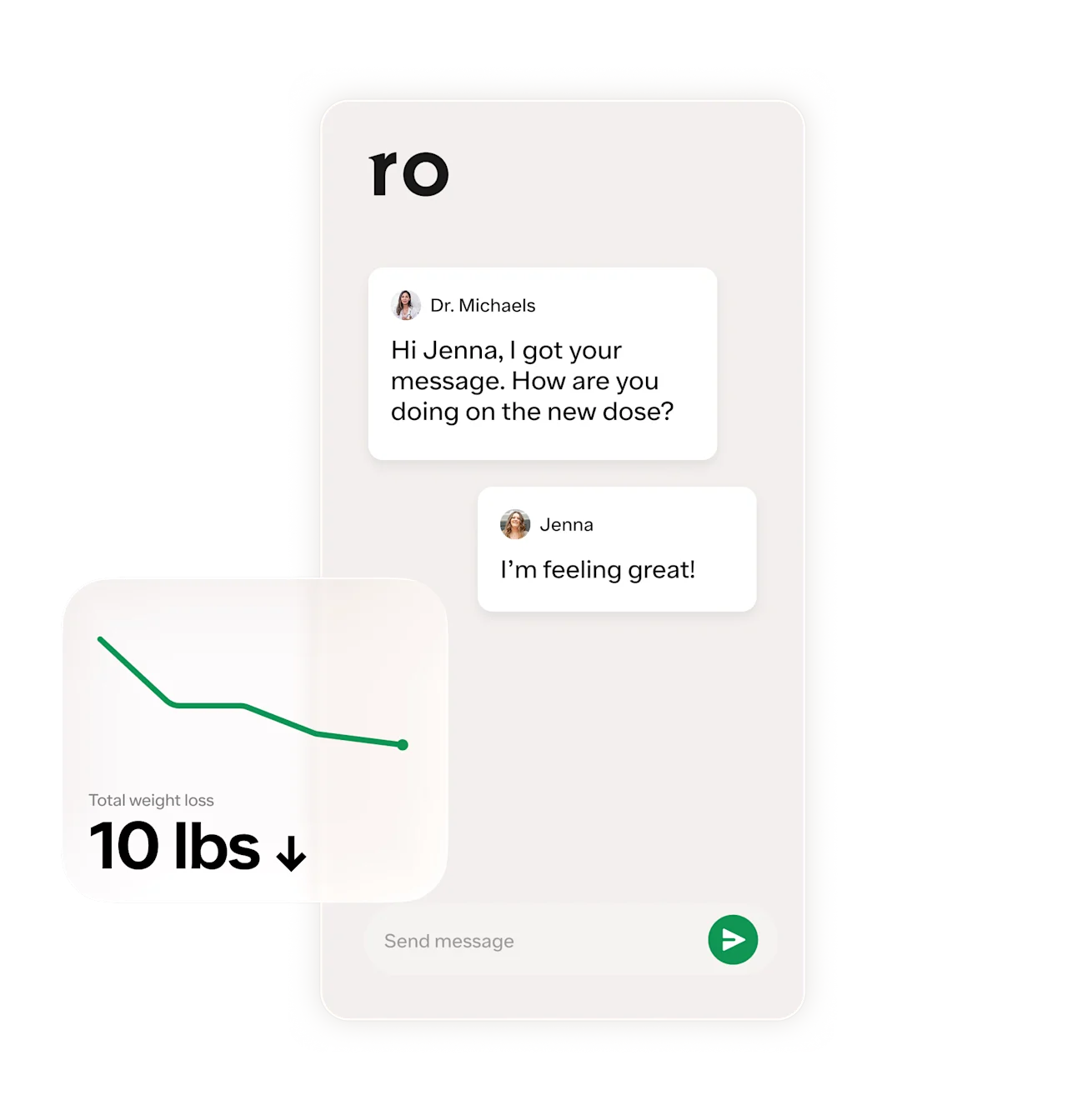Key takeaways
Liraglutide is the active ingredient in the brand-name GLP-1 medications Saxenda and Victoza, while semaglutide is the active ingredient in Ozempic, Wegovy, and Rybelsus.
Both liraglutide and semaglutide may be prescribed for weight loss, type 2 diabetes, and reducing certain risks in people with diabetes and heart disease. They share many common side effects and can be administered via a subcutaneous (under the skin) injection.
There are several differences between semaglutide vs. liraglutide, including in their dosing schedules, costs, and effectiveness.
Here's what we'll cover
Here's what we'll cover
Here's what we'll cover
Key takeaways
Liraglutide is the active ingredient in the brand-name GLP-1 medications Saxenda and Victoza, while semaglutide is the active ingredient in Ozempic, Wegovy, and Rybelsus.
Both liraglutide and semaglutide may be prescribed for weight loss, type 2 diabetes, and reducing certain risks in people with diabetes and heart disease. They share many common side effects and can be administered via a subcutaneous (under the skin) injection.
There are several differences between semaglutide vs. liraglutide, including in their dosing schedules, costs, and effectiveness.
You may not recognize liraglutide or semaglutide, but chances are you’re familiar with their brand names: Ozempic, Wegovy, Rybelsus, Saxenda, and Victoza. Liraglutide and semaglutide are the active ingredients in these GLP-1 medications, which treat type 2 diabetes, weight loss, or heart disease. So, what’s the difference between liraglutide vs. semaglutide?
There are actually quite a few differences between these diabetes and weight loss medications, and they’re worth understanding if you’re considering taking them. In this guide, we’ll break down the key differences between semaglutide vs. liraglutide, from how they work to typical side effects, pricing, and more.
What is liraglutide?
Liraglutide is the active ingredient in the brand-name drugs Victoza and Saxenda, both of which are made by Novo Nordisk and approved by the U.S. Food and Drug Administration (FDA).
Victoza is FDA-approved for two indications:
To improve blood sugar control in adults and children aged 10 and older with type 2 diabetes
To reduce cardiovascular risk in adults with type 2 diabetes and heart disease
Saxenda is FDA-approved for weight loss in the following populations:
Adults with obesity (body mass index, or BMI, of 30 or higher)
Adults with overweight (BMI of 27 or higher) and a weight-related health condition, such as high blood pressure or cholesterol
Children aged 12 and older with obesity
The FDA approved a generic version of Victoza, known simply as liraglutide, in late 2024. There is no generic form of Saxenda. All three forms of liraglutide (Victoza, Saxenda, and generic) are injectable medications and should be used in combination with a reduced-calorie diet and increased physical activity.
How does liraglutide work?
Liraglutide mimics the hormone glucagon-like peptide 1 (GLP-1), which is naturally released by your gut after eating to regulate blood glucose levels and appetite. GLP-1 boosts insulin production, limits glucagon release, slows down digestion, and promotes feelings of fullness. Together, these effects can help control blood sugar. They can also lead to weight loss. Food takes a longer time to empty out of your stomach, and at the same time, your brain is being sent signals that you’re full. So, your appetite decreases, and, as a result, you’re likely to eat less food.
While natural GLP-1 breaks down in minutes, liraglutide has a half-life of up to 14 hours, which makes it highly effective for managing type 2 diabetes and obesity. Due to its half-life, liraglutide is taken on a daily basis. That’s one of the key differences between liraglutide vs. semaglutide, which is administered weekly.
Rx weight loss with Ro
Get access to prescription weight loss medication online
What is semaglutide?
Semaglutide is the active ingredient in the brand-name drugs Ozempic, Wegovy, and Rybelsus, all of which are also made by Novo Nordisk. While Ozempic and Wegovy are injectable medications that are administered weekly, Rybelsus is a tablet that’s taken daily.
Ozempic is FDA-approved for two indications:
To improve blood sugar control in adults with type 2 diabetes
To reduce the risk of major cardiovascular events, such as heart attack or stroke, in adults with type 2 diabetes and heart disease
Wegovy is also FDA-approved for two indications:
To reduce body weight and maintain weight loss in adults and children ages 12 and up with obesity, as well as in adults with overweight and at least one weight-related health condition
To reduce the risk of major cardiovascular events, such as heart attack or stroke, in adults with heart disease and either obesity or overweight
Rybelsus is FDA-approved to treat type 2 diabetes by improving blood sugar control.
All three semaglutide drugs should be used in combination with diet and exercise.
How does semaglutide work?
Similar to liraglutide, semaglutide also mimics GLP-1, but it has a much longer half-life. The drug stays active for nearly seven days, which is why it only needs to be injected weekly, as opposed to daily, like liraglutide. In mimicking GLP-1, semaglutide works for weight loss and diabetes by increasing insulin production, limiting the release of glucagon, and delaying gastric emptying (the process in which food passes through your stomach into your small intestine). These effects can help keep your blood sugar levels in check while also making you feel full sooner and longer, so you’re likely to eat less and, as a result, potentially lose weight.
Semaglutide’s beneficial effects for type 2 diabetes and obesity—improving glycemic control and promoting weight and fat loss—also help lower cardiovascular risk since high blood sugar and body fat are known risk factors for heart disease. Additionally, research suggests that GLP-1 agonists like semaglutide may have an anti-inflammatory effect that can further help lower the risk of heart attack or stroke in people with heart disease and obesity and/or type 2 diabetes.
Liraglutide vs. semaglutide: side effects
Liraglutide and semaglutide share many side effects, both rare and serious. The drugs delay gastric emptying, which may affect the absorption of any oral medications. And they share many contraindications and warnings, including pregnancy and a personal or family history of certain thyroid cancers.
Here’s an overview of the differences in side effects between liraglutide vs. semaglutide, when each drug was compared to a placebo in separate clinical trials:
Common side effects unique to liraglutide (Saxenda) include increased lipase and fever.
Common side effects unique to semaglutide (Wegovy) include bloating, belching, flatulence, heartburn, and the common cold.
When it comes to serious side effects, diabetic retinopathy (a vision-related complication of type 2 diabetes) is more likely with semaglutide.
Liraglutide side effects
The most common side effects of liraglutide are digestive in nature, including nausea, diarrhea, and vomiting. Saxenda, the higher-strength form of liraglutide approved for weight loss, has a longer list of side effects than Victoza, based on what was seen in studies of each drug compared with placebo. The chart below shares an overview of the most common side effects of liraglutide:
Victoza side effects | Saxenda side effects |
|---|---|
Nausea Diarrhea Vomiting Decreased appetite Upset stomach or indigestion Constipation
| Nausea Diarrhea Vomiting Decreased appetite Upset stomach or indigestion Constipation Injection site reactions (e.g. rash or redness) Headache Hypoglycemia (low blood sugar) Fatigue Dizziness Abdominal pain Increased lipase Fever Stomach flu |
While rare, serious side effects can occur when taking liraglutide, including:
Pancreatitis
Severe hypoglycemia
Acute kidney injury
Allergic reactions
Acute gallbladder disease
Pulmonary aspiration during general anesthesia or deep sedation
Saxenda may cause additional serious side effects, such as an increase in heart rate and suicidal behavior or ideation.
Some people may be more likely to experience serious side effects when taking liraglutide, including people who take insulin or have (or have had) kidney or gallbladder problems. And some people should not take liraglutide at all; this includes individuals who have multiple endocrine neoplasia syndrome type 2 (MEN2) or a personal or family history of medullary thyroid carcinoma (MTC).
As always, it’s important to share your full medical history and a list of any medications or supplements you are taking with your healthcare provider. This way your provider can determine if liraglutide will be safe for you to take as is, or if you need to adjust the dosage of any other medications (such as insulin) before starting treatment.
Semaglutide side effects
Like liraglutide, many of semaglutide’s most common side effects are gastrointestinal in nature. Also similar to liraglutide, the higher-strength version of semaglutide (Wegovy) has a longer list of common side effects than Ozempic. Here’s a look at the common side effects of semaglutide:
Ozempic side effects | Wegovy side effects | Rybelsus side effects |
|---|---|---|
Nausea Vomiting Diarrhea Abdominal pain Constipation
| Nausea Vomiting Diarrhea Abdominal pain Constipation Headache Fatigue Upset stomach Dizziness Bloating Belching Hypoglycemia in people with type 2 diabetes Flatulence Stomach flu Heartburn Common cold | Nausea Vomiting Diarrhea Abdominal pain Constipation Decreased appetite |
The serious side effects that can occur when taking either form of semaglutide include:
Pancreatitis
Diabetic retinopathy complications
Hypoglycemia (low blood sugar)
Acute kidney injury
Allergic reactions
Acute gallbladder disease
Pulmonary aspiration during general anesthesia or deep sedation
Similar to Saxenda, Wegovy also includes an increase in heart rate and suicidal behavior or ideation in its list of possible serious side effects.
Talk to your healthcare provider about your medical history before starting semaglutide treatment, as certain health conditions may increase your risk of experiencing serious side effects; this is especially true of people with a history of diabetic retinopathy, severe gastroparesis, or kidney or gallbladder problems.
Like liraglutide, semaglutide should not be taken by anyone with MEN2 or a personal or family history of MTC. People who plan on getting pregnant should stop taking semaglutide at least two months prior to trying to conceive.
Liraglutide vs. semaglutide: doses and dosage schedules
There is an oral form of semaglutide known as Rybelsus. Then there’s Ozempic and Wegovy, which, like liraglutide, are subcutaneous injections you administer under the skin into your abdomen, thigh, or upper arm.
All forms of semaglutide and liraglutide follow a titrated dosing schedule. This means you’ll start at a low dose and gradually increase your dose (under your healthcare provider’s guidance and supervision) until you find an effective maintenance dose that works for you.
Here are some of the key differences in dosing between liraglutide vs. semaglutide:
Liraglutide is injected once a day, while injectable semaglutide is administered once a week. The oral form of semaglutide, Rybelsus tablet, is taken once daily.
It can take 3–5 weeks to reach a maintenance dose of liraglutide, while for semaglutide, it takes much longer: up to nine weeks for Rybelsus, up to 13 weeks for Ozempic, and up to 21 weeks for Wegovy.
The injectable forms of these medications come as a liquid solution in a prefilled pen. The Saxenda, Victoza, and Ozempic pens contain multiple doses of the medication, while each Wegovy pen contains a single dose of the medication. To inject liraglutide or Ozempic, you’ll need to attach a new needle to the pen with each injection. Each Wegovy pen comes with a needle already attached.
Liraglutide doses and dosage schedules
You inject liraglutide once a day, at any time of day, with or without food. The typical starting dose of liraglutide is 0.6 daily. The maximum daily dose of Victoza is 1.8 mg, while Saxenda's is 3 mg. Because Saxenda comes in higher doses, it may take longer for you to titrate up to your final maintenance dose of Saxenda.
The table below shows a typical dosage schedule for liraglutide:
Dosing schedule | Victoza | Saxenda |
|---|---|---|
Week 1 | 0.6 mg, injected daily | 0.6 mg, injected daily |
Week 2 | 1.2 mg, injected daily | 1.2 mg, injected daily |
Week 3 | 1.8 mg, injected daily | 1.8 mg, injected daily |
Week 4 | 1.8 mg, injected daily | 2.4 mg, injected daily |
Week 5+ | 1.8 mg, injected daily | 3.0 mg, injected daily |
Semaglutide doses and dosage schedules
Oral semaglutide (Rybelsus) is taken once a day, at least 30 minutes before you eat, drink, or take any other oral medications. The tablet should be swallowed whole with 4 oz of water or less. The typical starting dose of Rybelsus is 3 mg daily, and the maximum dose is 14 mg daily. A newer formulation—though just as safe and effective as the original—with different dosing is also available; your healthcare provider or pharmacist can confirm which version you’re prescribed.
If you’re taking Ozempic or Wegovy, you’ll inject semaglutide once a week, on the same day each week. You can inject it at any time on your scheduled day, with or without food. The typical starting dose of semaglutide is 0.25 mg weekly. The maximum weekly dose of Ozempic is 2 mg weekly, while Wegovy’s is 2.4 mg. Because Wegovy has a higher maximum dosage strength, it may take longer for you to titrate up to your long-term maintenance dose of Wegovy.
The table below shows a typical dosage schedule for semaglutide injections:
Dosing schedule | Ozempic | Wegovy |
|---|---|---|
Weeks 1–4 | 0.25 mg, injected weekly | 0.25 mg, injected weekly |
Weeks 5–8 | 0.5 mg, injected weekly | 0.5 mg, injected weekly |
Weeks 9–12 | 1 mg, injected weekly | 1 mg, injected weekly |
Weeks 13–16 | 2 mg, injected weekly | 1.7 mg, injected weekly |
Weeks 17+ | 2 mg, injected weekly | 1.7 mg or 2.4 mg, injected weekly |
Liraglutide vs. semaglutide: which one is better for weight loss?
In clinical trials, semaglutide produces better weight loss results than liraglutide. In a one-year study comparing health records of people who used Saxenda vs. Wegovy, the semaglutide group lost 5.1% of their baseline body weight, while those taking liraglutide lost 2.2%. People using these medications for obesity lost more weight than those using them to manage type 2 diabetes. And those who used their medication consistently had better weight loss results than those who missed doses.
In a randomized clinical trial, adults with obesity or overweight (but without diabetes) who took Saxenda experienced an average weight loss of 6.4% in 68 weeks (about a year and a half). The participants taking Wegovy, on the other hand, experienced more than double the weight loss, at 15.8% on average.
Liraglutide vs. semaglutide: cost
Liraglutide and semaglutide can be expensive medications, but there are some affordable options, especially if you have insurance. Here’s an overview of the pricing for semaglutide vs. liraglutide:
Medication | Cost per month, without insurance |
|---|---|
Saxenda (liraglutide) | |
Victoza (liraglutide) | |
Generic Victoza (liraglutide) | |
Wegovy (semaglutide) | |
Ozempic (semaglutide) | |
Rybelsus (semaglutide) |
Insurance coverage for either GLP-1 medication can vary, but it’s worth noting that insurers typically only cover a medication if you’re taking it for an FDA-approved indication, such as Ozempic for type 2 diabetes. If you take Ozempic or Victoza off-label for weight loss, it may not be covered by your plan. Also, some insurance plans, including Medicare, do not cover weight loss medications like Wegovy or Saxenda—although Wegovy may be covered if you have heart disease and take it to lower your cardiovascular risk.
Novo Nordisk offers savings cards for both Ozempic and Rybelsus, as well as Wegovy, but not for Saxenda or Victoza. If you’re not eligible for these programs or have to pay cash for your prescription, you may still be able to save using a drug discount card. Offered by websites such as SingleCare, GoodRx, and others, these Ozempic and Wegovy coupon cards are free to download and use but cannot be combined with insurance.
Liraglutide cost
Without insurance, the cost of liraglutide ranges from $225 to $1,350 per month, depending on which brand name or generic you’re taking. Here’s a look at the typical prices for liraglutide, from most to least expensive:
Form of liraglutide | Cost per month, without insurance |
|---|---|
Saxenda | |
Victoza | |
Generic Victoza (liraglutide) |
If you have insurance with coverage for liraglutide, you’ll only pay your copay, or you may pay nothing at all, depending on the details of your plan. However, insurance coverage for Victoza and Saxenda can vary. For example, some insurance plans, including Medicare, do not cover weight loss medications like Saxenda at all.
Semaglutide cost
Without insurance, the cost of semaglutide ranges from $194–$1,350 per month, depending on which form of semaglutide you’re taking. Here’s a look at the typical prices for semaglutide, from most to least expensive:
Form of semaglutide | Cost per month, without insurance |
|---|---|
Wegovy | |
Ozempic | |
Rybelsus |
If you get brand-name Wegovy or Ozempic, you may be eligible for one of Novo Nordisk’s savings programs:
The Ozempic Savings Offers lowers the price of Ozempic to as low as $25 for a one-, two-, or three-month refill for people with private or commercial insurance.
The Wegovy Savings Offer lowers the price of Wegovy to $0–$650 per month, depending on the details of your plan, for people with commercial insurance.
The Rybelsus Savings Offer lowers the price of Rybelsus to $10 for a one-, two-, or three-month refill for people with private or commercial insurance that includes coverage for Rybelsus.
The above savings offers are only available to people with commercial insurance. People with federal, state, or government-funded insurance plans, such as Medicare or TRICARE, cannot use these programs.
Liraglutide vs. semaglutide: how do they compare?
To help you compare these two GLP-1 medications, the chart below highlights the key differences and similarities between semaglutide and liraglutide.
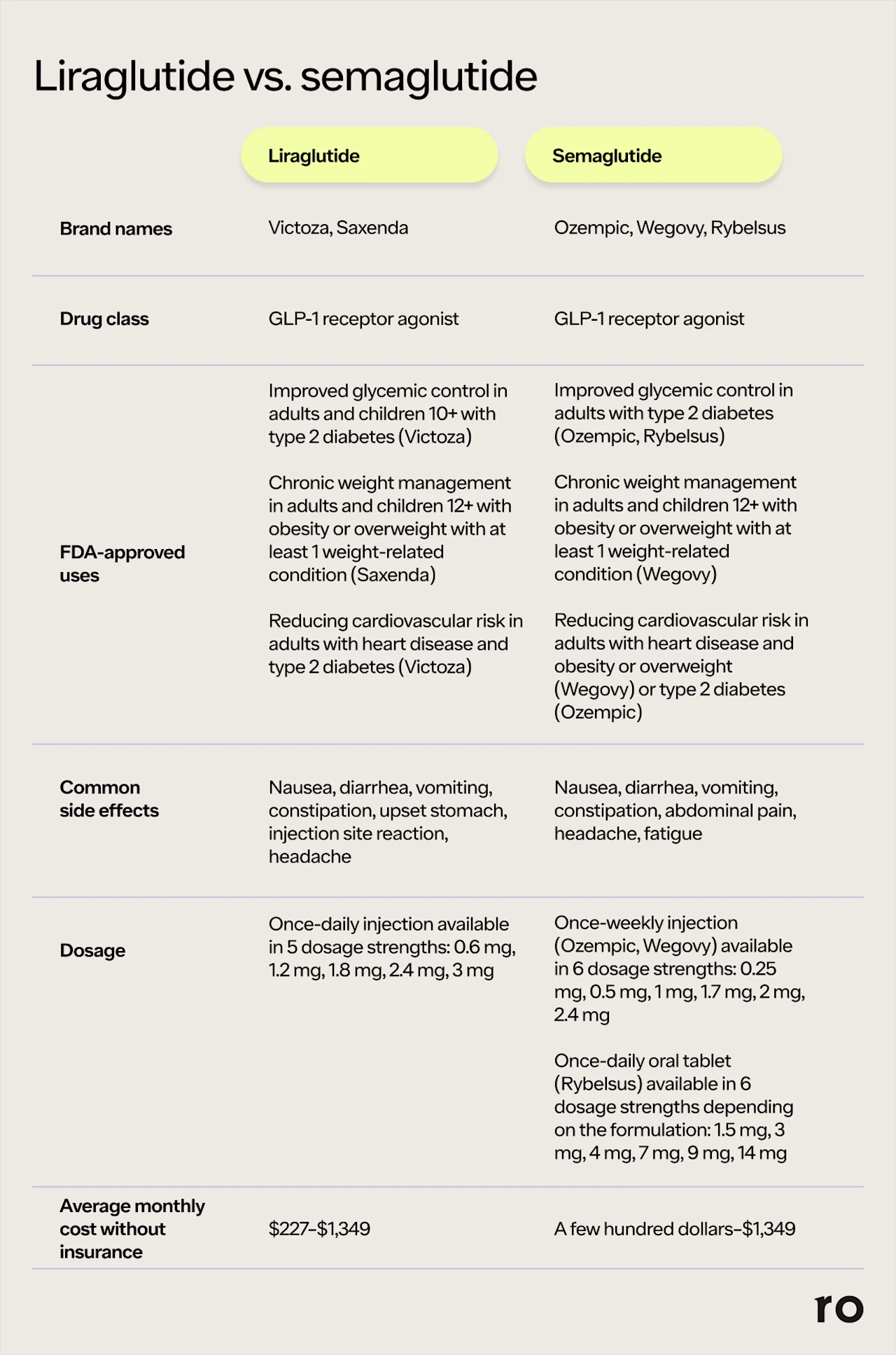
Bottom line: liraglutide vs. semaglutide
Choosing between semaglutide vs. liraglutide depends on your specific health needs, tolerance for side effects, and budget. Both medications are effective GLP-1 receptor agonists, but their differences in efficacy, dosing, and cost may make one a better fit for your goals.
Semaglutide is generally more effective than liraglutide. Clinical trials show that semaglutide produces greater weight loss and better blood sugar control than liraglutide.
They differ in their dosing schedules. Liraglutide is a daily injection, while semaglutide is only injected weekly due to its longer half-life. This may make semaglutide more convenient for many patients. However, it takes longer to titrate up to a maintenance dose on semaglutide vs. liraglutide.
They share many common side effects. Nausea, diarrhea, vomiting, and upset stomach are commonly reported with either medication, and they carry similar risks and warnings.
Cost and insurance coverage can vary. Typically, insurers only cover a medication when it is prescribed for an FDA-approved indication.
Hear from Ro patients
Ro members taking branded GLP-1 medications were paid for their testimonials.
Frequently asked questions (FAQs)
Which is more effective: liraglutide or semaglutide?
Clinical trials show that semaglutide tends to be more effective than liraglutide at both weight reduction and improving blood sugar levels. According to one meta-analysis of 23 randomized clinical trials, Wegovy produced the most weight loss, followed by Saxenda, then Ozempic, and then Victoza. When it came to lowering HbA1c levels, Wegovy also produced the best results, followed by Ozempic, and then Victoza.
Can you switch from liraglutide to semaglutide for weight loss?
Yes, you can switch from liraglutide to semaglutide for weight loss if you and your healthcare provider decide that that would be a better treatment option for you. But do not stop taking liraglutide or switch to semaglutide without first consulting a healthcare professional, as you may experience side effects. Your healthcare provider will advise you on how to make the switch to semaglutide safely, including how to taper off your dose of liraglutide and begin treatment with semaglutide.
Can you take liraglutide and semaglutide together?
No, liraglutide and semaglutide should not be taken together. They also should not be combined with any other GLP-1 medication.
DISCLAIMER
If you have any medical questions or concerns, please talk to your healthcare provider. The articles on Health Guide are underpinned by peer-reviewed research and information drawn from medical societies and governmental agencies. However, they are not a substitute for professional medical advice, diagnosis, or treatment.
Ozempic Important Safety Information: Read more about serious warnings and safety info.
Wegovy Important Safety Information: Read more about serious warnings and safety info.
Saxenda Important Safety Information: Read more about serious warnings and safety info.
GLP-1 Important Safety Information: Read more about serious warnings and safety info.
References
DailyMed. (2025). Prescribing Information: Liraglutide injection, for subcutaneous use. Retrieved from https://dailymed.nlm.nih.gov/dailymed/fda/fdaDrugXsl.cfm?setid=2100ec49-57b2-4330-ab5f-057ce9b7e4d0&type=display
Drucker, D. J. (2016). The cardiovascular biology of glucagon-like peptide-1. Cell Metabolism, 24(1), 15–30. doi: 10.1016/j.cmet.2016.06.009. Retrieved from https://www.cell.com/cell-metabolism/fulltext/S1550-4131(16)30295-9
Gasoyan, H., Pfoh, E. R., Schulte, R., et al. (2024). One-Year Weight Reduction With Semaglutide or Liraglutide in Clinical Practice. JAMA Network Open, 7(9), e2433326. doi: 10.1001/jamanetworkopen.2024.33326. Retrieved from https://pmc.ncbi.nlm.nih.gov/articles/PMC11400221/
Lincoff, A. M., Brown-Frandsen, K., Colhoun, H. M., et al. (2023). Semaglutide and Cardiovascular Outcomes in Obesity without Diabetes. New England Journal of Medicine, 389(24), 2221–2232. doi: 10.1056/nejmoa2307563. Retrieved from https://www.nejm.org/doi/10.1056/NEJMoa2307563
Marso, S. P., Daniels, G. H., Brown-Frandsen, K., et al. (2016). Liraglutide and Cardiovascular Outcomes in Type 2 Diabetes. The New England Journal of Medicine, 375(4), 311–322. doi: 10.1056/NEJMoa1603827. Retrieved from https://pmc.ncbi.nlm.nih.gov/articles/PMC4985288/
Nielsen, M. S., Brøndsted, L., Kankam, M., et al. (2024). A Bioequivalence Study of Two Formulations of Oral Semaglutide in Healthy Participants. Diabetes therapy: Research, Treatment and Education of Diabetes and Related Disorders, 10.1007/s13300-024-01674-8. Advance online publication. doi: 10.1007/s13300-024-01674-8 Retrieved from https://link.springer.com/article/10.1007/s13300-024-01674-8
Novo Nordisk-a. (2024). Find out the cost for Rybelsus. Retrieved from https://www.novocare.com/diabetes/products/rybelsus/explaining-list-price.html
Novo Nordisk-b. (2024). Get Rybelsus savings and support. Retrieved from https://www.novocare.com/diabetes/products/rybelsus/savings-offer.html
Novo Nordisk-c. (2024). Get Wegovy savings and WeGoTogether support. Retrieved from https://www.novocare.com/obesity/products/wegovy/savings-offer.html
Novo Nordisk-d. (2024). Request or activate your Ozempic Savings Offer. Retrieved from https://www.novocare.com/diabetes/products/ozempic/savings-offer.html
Novo Nordisk-e. (2023). Victoza Pricing. Retrieved from https://www.novopricing.com/victoza.html
Novo Nordisk-f. (2024). What is the list price for Ozempic and will it impact me?. Retrieved from https://www.novocare.com/diabetes/products/ozempic/explaining-list-price.html
Novo Nordisk-g. (2024). What is the list price for Saxenda and will it impact me?. Retrieved from https://www.novocare.com/obesity/products/saxenda/explaining-list-price.html
Novo Nordisk-h. (2024). What is the list price for Wegovy and will it impact me?. Retrieved from https://www.novocare.com/obesity/products/wegovy/let-us-help/explaining-list-price.html
Rubino, D. M., Greenway, F. L., Khalid, U., et al. (2022). Effect of Weekly Subcutaneous Semaglutide vs Daily Liraglutide on Body Weight in Adults With Overweight or Obesity Without Diabetes. JAMA, 327(2), 138. doi: 10.1001/jama.2021.23619. Retrieved from https://jamanetwork.com/journals/jama/fullarticle/2787907
SingleCare. (2025). Liraglutide Coupons & Prices. Retrieved from https://www.singlecare.com/prescription/liraglutide
Tilinca, M. C., Tiuca, R. A., Burlacu, A., et al. (2021). A 2021 Update on the Use of Liraglutide in the Modern Treatment of 'Diabesity': A Narrative Review. Medicina (Kaunas, Lithuania), 57(7), 669. doi: 10.3390/medicina57070669. Retrieved from https://pmc.ncbi.nlm.nih.gov/articles/PMC8307742/
U.S. Food & Drug Administration (FDA-a). (2024). FDA Approves First Generic of Once-Daily GLP-1 Injection to Lower Blood Sugar in Patients with Type 2 Diabetes. Retrieved from https://www.fda.gov/news-events/press-announcements/fda-approves-first-generic-once-daily-glp-1-injection-lower-blood-sugar-patients-type-2-diabetes
U.S. Food & Drug Administration (FDA-b). (2024). Prescribing Information: Ozempic (semaglutide) injection, for subcutaneous use. Retrieved from https://www.accessdata.fda.gov/drugsatfda_docs/label/2024/209637s032lbl.pdf
U.S. Food & Drug Administration (FDA-c). (2024). Prescribing Information: Ryblesus (semaglutide) tablets, for oral use. Retrieved from https://www.accessdata.fda.gov/drugsatfda_docs/label/2024/213051s020s021lbl.pdf
U.S. Food & Drug Administration (FDA-d). (2024). Prescribing Information: Saxenda (liraglutide) injection, for subcutaneous use. Retrieved from https://www.accessdata.fda.gov/drugsatfda_docs/label/2024/206321s019lbl.pdf
U.S. Food & Drug Administration (FDA-e). (2024). Prescribing Information: Victoza (liraglutide) injection, for subcutaneous use. Retrieved from https://www.accessdata.fda.gov/drugsatfda_docs/label/2024/022341Orig1s043lbl.pdf
U.S. Food & Drug Administration (FDA-f). (2024). Prescribing Information: Wegovy (semaglutide) injection, for subcutaneous use. Retrieved from https://www.accessdata.fda.gov/drugsatfda_docs/label/2024/215256s015lbl.pdf
Xie, Z., Yang, S., Deng, W., et al. (2022). Efficacy and Safety of Liraglutide and Semaglutide on Weight Loss in People with Obesity or Overweight: A Systematic Review. Clinical Epidemiology, 14, 1463–1476. doi: 10.2147/CLEP.S391819. Retrieved from https://pmc.ncbi.nlm.nih.gov/articles/PMC9738168/
Yao, H., Zhang, A., Li, D., et al. (2024). Comparative effectiveness of GLP-1 receptor agonists on glycaemic control, body weight, and lipid profile for type 2 diabetes: systematic review and network meta-analysis. BMJ (Clinical research ed.), 384, e076410. doi: 10.1136/bmj-2023-076410. Retrieved from https://pmc.ncbi.nlm.nih.gov/articles/PMC10823535/


